High Quality PBL Meets Mental Health
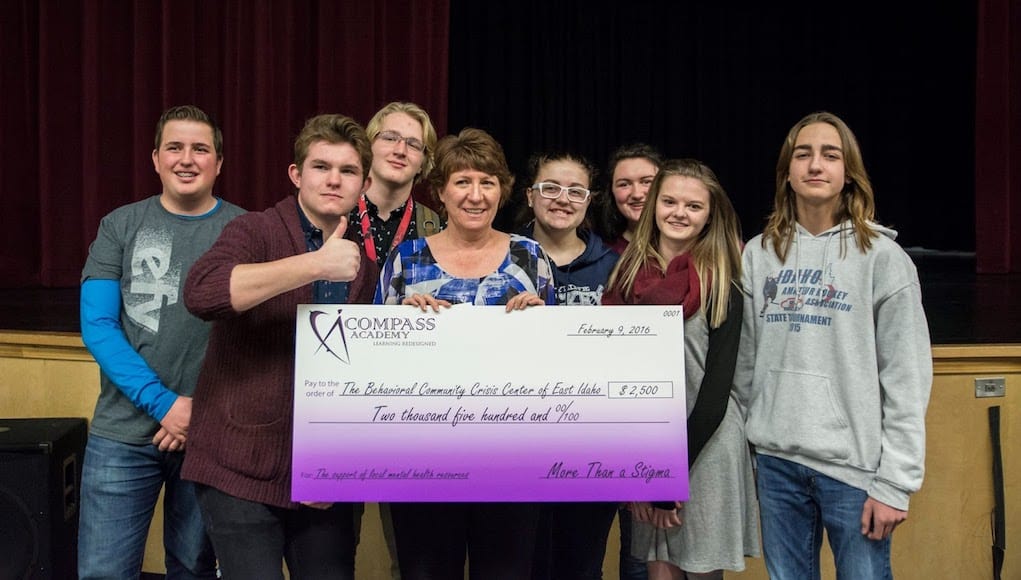
Nearly three years ago, my co-teacher and I asked our sophomores to begin a mental health project. We’re a project-based learning school and we were launching our second project of the year in our integrated course called Behavioral Studies which combines English with psychology. Normally, when you start a project, you launch it with an engaging activity and ask students a high-level, begs-to-be-answered driving question. Many times you also reveal what the end product of the project will be. Maybe you want students to make a video or do a presentation.
My co-teacher and I were curious about what might happen if we didn’t choose an end product, and instead let our students decide what they wanted to do. We had done our research and knew what they would encounter when they did their research. We knew they would see the many different issues our country has with mental health, including the stigma that often accompanies mental illness. We had our own ideas about what our students could do with these issues, but, once again, we were curious what 150 15- and 16-year-olds would come up with.
We had only one parameter: whatever they decided, they needed to involve the community. That was it. The next few days were a flurry of ideation. Our six large whiteboards around our room were tattooed with ideas. In the end, the students wanted to start one of Idaho’s first mental health awareness campaigns which they named More Than a Stigma. Their goal was to educate their community, reach out to schools, provide informational seminars and fundraise for local non-profit mental health resources. And that’s just what they did. We’re now into year three of More Than a Stigma with a new batch of sophomores. More Than a Stigma has evolved over the years, and as outside entities pay attention to what our students are doing, we’ve been asked to help facilitate public mental health discussions, broaden our awareness efforts and this year, our local Behavioral Health Board requested that our students run their annual children’s mental health conference. In looking at this project and the Framework for High Quality Project-Based Learning, HQPBL, I believe our project, More Than a Stigma, is an example of what the Framework suggests.

Intellectual Challenge and Accomplishment
“A high quality project requires students to think critically about a complex problem, question, or issue with multiple answers, and then work on that project over the course of days, weeks, and even months.” The mental health issues that face our country are troubling, complex and certainly challenging. The issues range from lack of resources and lack of access to treatment and clinicians to the rising rates of mental health problems, especially among teenagers, and the incarcerations rates of the mentally ill. The stigma of mental illness by itself is a massive issue, one that tends to keep many people from ever seeking help for a legitimate, serious medical condition.
All of these problems can be found in any community, no matter the size, which is part of why our students took these issues on. They had to pull apart the topics under mental health and reveal truth to dispel the myths and misconceptions. There was no one right answer.
Many people all over our country are looking into these issues and each person is finding a different way to address them. Our students were no different. They quickly discovered that while there is an abundance of correct information regarding mental disorders and mental health in general, their community had such ingrained misconceptions about such things that it became more of a search of how to overcome bias, stereotypes and fixed mindsets. Their research had to expand to those particular areas and the challenge became, “How do we frame our information and deliver it in a way that people will listen to?”
Our students’ accomplishments were hard to notice at first. They made videos, they published information on social media, they delivered presentations, but were they changing minds? Slowly, the fruits of their labor began to reveal themselves. They started getting comments on videos and on social media posts. The students started receiving emails after presentations and they started having conversations with people that led our students to believe that they were having an impact. People were expressing things like, “I always thought I understood this subject. Turns out I was wrong,” or “After listening to your presentation, I feel like I’m ready to talk to my doctor about some things I’ve been experiencing.” The students’ head-first dive into such a challenging array of subjects was having an effect, and it continues to have an effect each year we run More Than a Stigma.
Authenticity
“To motivate students and show them the relevance of what they are learning in school, projects should be experienced as ‘real.’” Trying to solve a centuries-old stigma against something that society is still, in 2018, trying to figure out provides our students with an authentic problem. As students respond to tough questions like, “How do we challenge the misconceptions around mental health?” or “When and how do behaviors and attitudes change?” they, year after year, come up with innovative ideas to help spread information to their community.
And here’s the biggest step when it comes to authenticity: you have to let them really solve the problem. By that, I mean that if the problem is real, but they only hypothetically solve it, you’ve lost a big piece of the authenticity. More Than a Stigma, our mental health project, is real. It is not “close to real” or “patterned after real.” It is real. Real mental health organizations have really partnered up with us and together we are pushing forth initiatives to help educate our community. Real audiences rely on our students to learn how to change their minds and behaviors toward mental health. The students raise real money to give to a real non-profit mental health clinic. When the students first started coming up with solutions, we didn’t have the end product be a presentation about those solutions, our end product was the solution.
The key to authenticity is to find a real problem–real to you and your students, real to your community or real to our world. The next key to let your students actually solve it.
That last part sounds scary to many people I talk to about this project. It’s scary because we’re letting students, not adults, take a crack at a very big problem for many people. It’s scary because we’ve now let real-world risk enter the classroom, free to mingle with our student’s ideas and solutions. Despite the “scariness,” we press forward and the students sink themselves into More Than a Stigma because it’s important that they do, because it’s all real.
Public Product

“In a high quality project, students make their work public by sharing it not only with the teacher but also with each other, experts, and other people beyond the classroom.” When you decide to run an awareness campaign, you automatically invite the community to look at everything you’re doing. The students didn’t have to wait until the end of More Than a Stigma to go public with their work. A few weeks in and they were live on social media and our website was welcoming visitors. Every piece of content was out there to be judged, commented on, and shared. We had experts in our building numerous times throughout the project. In one capacity, those experts were with us to collaborate and add their knowledge to our growing knowledge of mental health. In other capacities, those experts were with the students to provide feedback and guidance and to judge their work.
At the end of More Than a Stigma, after numerous smaller presentations and events, we have our big event. This big event, in the past, has meant that swarms of people enter our building, listen to presentations, interact with mental health displays, and take in different experiences students have planned. Our first year doing this, we welcomed nearly 500 guests to share in our ultimate end products. This year our main event is bigger than anything our students have tried in the past. This year, More Than a Stigma is facilitating a professional mental health conference for two days on behalf of our local Behavioral Health Board. Our audience will contain parents, teachers, youth, business owners, local politicians, mental health professionals and other members for the community, all with different needs when it comes to helping people learn more about mental illness.
The students have already figured out that in order for this conference to truly help people, they will need to teach rather than present. They will need to work alongside the experts and other community members to make sure our conference attendees have a truly unique experience. The interesting thing about this project is that instead of shying away from public opinion, as sometimes students are tempted to do, they are eager to welcome the community. They have become so passionate about their topic that they see this huge opportunity as a way to reach more and more of the public. That, to me, should be a standard in HQPBL. In the ideal, the students are looking for ways to go public with what they’ve done, versus going public because it was a requirement.
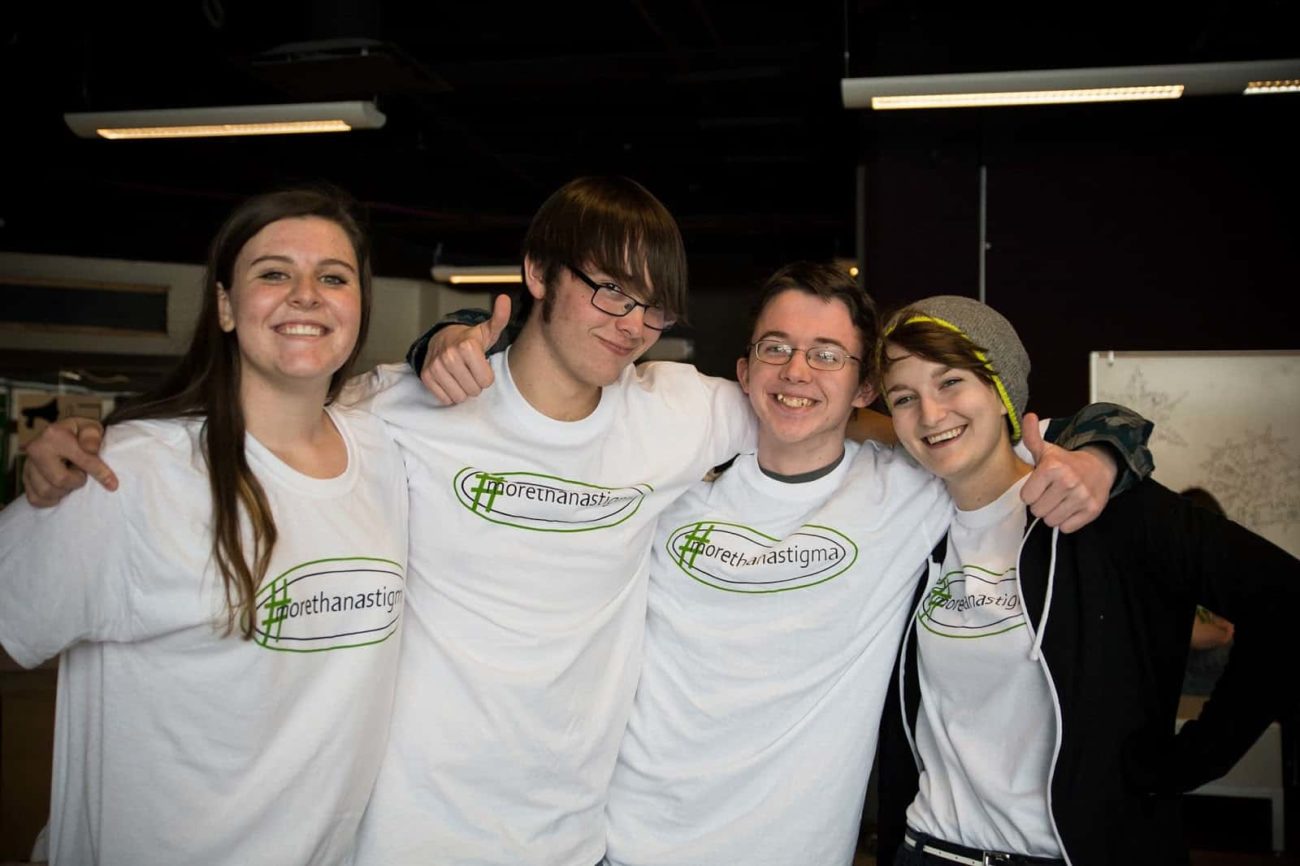 Collaboration
Collaboration
To better facilitate and display stellar collaboration, we patterned ourselves after successful non-profit organizations who do work similar to what More Than a Stigma does. This year, we have tried a little something different with collaboration to amp up the idea that we operate More Than a Stigma in a way that makes sense in the real world.
In a project-based setting, facilitators are often grouping students for projects. As my co-teacher and I thought about our massive mental health project, I began to wonder, “How long would it take for our students to realize they needed a team for themselves?” In the past, it’s always been expected that we, the facilitators, would group them up. This year we gave that chore to them. We reasoned that, for the most part, teaming up with collaborators happens naturally. Colleagues may have a shared interest or passion and decide to work together. Co-workers may realize that the workload is too much for just one person. Still, others may enjoy the perspective of others and the combining of minds. Whatever the reason to group up, we wanted our students to decide for themselves when and if they grouped up and to appreciate the reason for such collaborations. This also opened up several conversations about the difference between creating a team and collaboration. Teams do collaborate, but you can collaborate without forming a team. In “the real world” we sometimes temporarily collaborate with someone for feedback or to get help with a specific task.
So now, as our students work on this awesome opportunity to really impact their community, they are also making more decisions for themselves and learning how those decisions impact their work. We’ve seen students group up and when they do, they still follow the same norms we always have for groups. They still make contracts, which helps with accountability, they still keep project management logs to help meet benchmarks and they still rely on each other throughout the project to deliver an end product together. We’ve also seen students decide they need to collaborate on a short-term basis, to learn a new skill or get feedback. We’ve seen groups of two emerge as well as the more traditional team of four. But we’ve also seen mega groups where eight or more are working together and they are learning, for themselves, the unique benefits and challenges that come with those types of teams. In HQPBL, teamwork, collaboration, and working with someone else to deliver a product is a standard. What those teams look like or what collaboration looks like should be dictated by the nature of the work to secure the authentic nature of your project.
Project Management
More Than a Stigma is a beast. It’s a big project that asks the entire sophomore class to work together. Project management strategies are a must. The students quickly looked at the organization pattern of other organizations in the world that look like us. They learned about how to make decisions with large groups of people and how to divide up work and tasks in a way that still allowed for voice and choice.
 One of our first strategies for project management was to hire help. More Than a Stigma employs a small band of leaders, selected from the sophomore class. These students submit resumes, go in for an interview, and, if hired, carry a certain load of responsibilities to help the project stay on track. Our More Than a Stigma Leadership Board act as representatives for their individual classes. This has proven helpful when decisions needs to be made. Ideas from each class are sent with their Leadership Board member to our weekly meetings. Leaders discuss the ideas, maybe seek additional ideas or feedback, go back to their classes a few times for more input, and then a decision is made.
One of our first strategies for project management was to hire help. More Than a Stigma employs a small band of leaders, selected from the sophomore class. These students submit resumes, go in for an interview, and, if hired, carry a certain load of responsibilities to help the project stay on track. Our More Than a Stigma Leadership Board act as representatives for their individual classes. This has proven helpful when decisions needs to be made. Ideas from each class are sent with their Leadership Board member to our weekly meetings. Leaders discuss the ideas, maybe seek additional ideas or feedback, go back to their classes a few times for more input, and then a decision is made.
Additionally, as we look at the work ahead, this year it’s our mental health conference, jobs are created. Those jobs are posted and students can decide if a certain job sounds like something they want to tackle. For example, one job this year is called Community Outreach. Students hired for this job are responsible for contacting sought after mental health organizations and asking them to participate in the conference. No one is made to do a job they don’t want to do. Those that don’t see themselves in any of the jobs we post are still working hard on the conference session they have proposed.
On a smaller scale, students use project-management logs to ensure that work their group has decided on gets done. Groups may determine certain roles. Some may decide to elect a leader of a team and that leader may help delegate other tasks. For example, if a group wants to make a video to go with their conference session, tasks to delegate may include filming, editing, script writing, etc. The group will determine deadlines and hold each other accountable.
More Than a Stigma could simply not work without proper organization and project management. The nice thing is, because the project is real, because everything is public and because so many are counting on us, the students don’t have to be lectured about the need for project management. What they do need are strategies and the environment in which to learn and use those strategies.
 Reflection
Reflection
More Than a Stigma is a rather long project. Sometimes, over the course of longer projects, kids tend to forget everything they’ve done. During More Than a Stigma, students are going all different directions, holding events, doing presentations, planning seminars and conferences and running websites and social media accounts. That’s a lot. We don’t want them to forget everything they’ve done because then reflection becomes problematic. We had to embed reflection into More Than a Stigma so that it took place at regular intervals. Where are we? What have we done? How do we feel about what has been done? What’s next? What help do we need? One protocol we like to use at the end of the week is the Shapes Protocol. A facilitator draws three shapes on the board, a triangle, a square, and a circle. For the triangle, students write down three things they’re taking away from the work we did that week. The square is for things that square with their beliefs. The circle is for questions that are still circling their minds. These could be content questions or logistical project questions.
At the very end of the project, to help students take in the massive amount of work they’ve done and to help them appreciate the journey, we put together a compilation video, which shows the evolution of the project. We watch it together as we bid the project farewell. Students get to see the uncertain beginning, the messy middle and the satisfying grand finale. This video is a staple in the project and it helps them appreciate and learn from every stage of a project.
The Core of HQPBL
Every project looks different. Those who practice project-based learning continually seek after projects that engage students in their own learning. I feel that More Than a Stigma helps engage our students because it’s real. High Quality PBL can be found in the real problems of our world. The stigma of mental illness is real. It’s actually the first thing to come up on Google as you begin typing, “The stigma of…” People feeling too ashamed to seek help for a mental illness is real. The need for our communities to become informed and change how they behave is real. Whatever they say about “kids these days”, these kids know when they’ve been asked to help out with something that matters. Give them something real and everything becomes real and meaningful too. A real problem provides real authenticity. Real authenticity results in real collaboration, project management and a real need to have the public witness their efforts. Start with something real and you’ll end with something real and impactful. And what’s more engaging than the chance to make a difference?
For more, see:
- Introducing a Framework for High Quality Project Based Learning
- HQPBL Case Study: Thrive Public Schools
- HQPBL Case Study: School21
Stay in-the-know with all things EdTech and innovations in learning by signing up to receive the weekly Smart Update. This post includes mentions of a Getting Smart partner. For a full list of partners, affiliate organizations and all other disclosures, please see our Partner page.
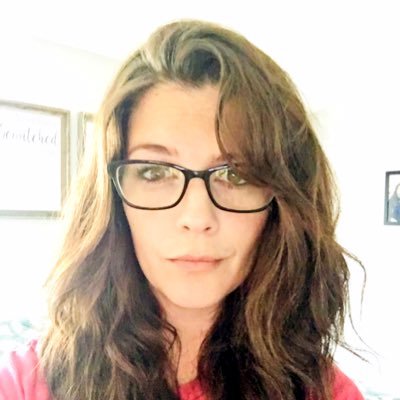


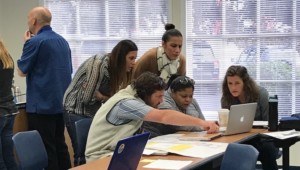

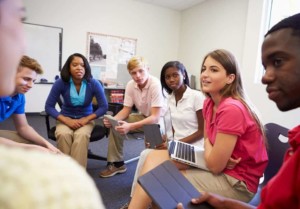
0 Comments
Leave a Comment
Your email address will not be published. All fields are required.